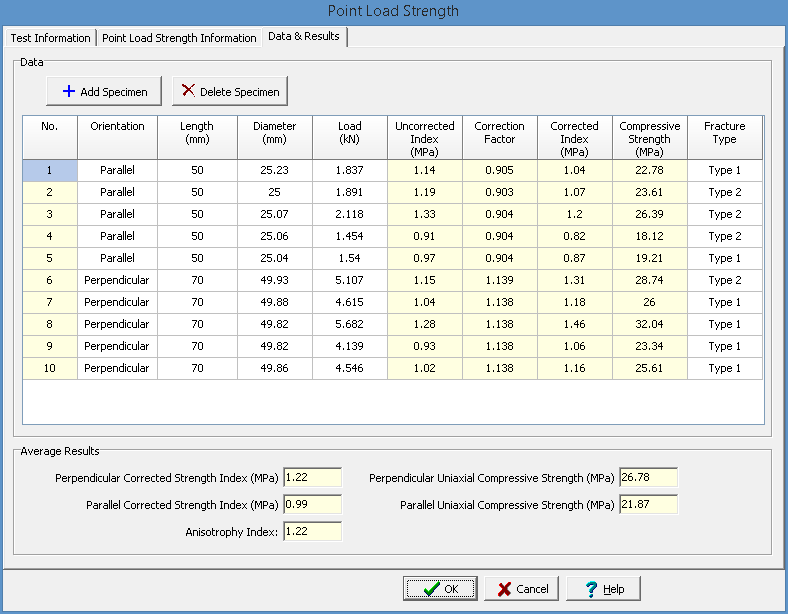|
<< Click to Display Table of Contents >> Data & Results Tab |
  
|
|
<< Click to Display Table of Contents >> Data & Results Tab |
  
|
This tab is used to specify the data and results of the test.

The following can be entered and displayed on this tab:
Data
Specimens can be added and deleted using the Add Specimen and Delete Specimen buttons. The measurements for each specimen may consist of the information below depending on the options selected on the previous tab.
No.: This is the specimen number and is automatically added by the program.
Orientation: This is used to select the direction of loading, either parallel or perpendicular to the plane of weakness.
Length: This is the length of the specimen.
Diameter: If the specimen type is axial core or diametral core, this is the diameter of the core.
Depth: If the specimen type is cut block or irregular lump, this is the depth of the specimen in the direction of loading.
Load: This is used to specify the maximum load before failure.
Uncorrected Index: This is the calculated uncorrected point load strength index.
Correction Factor: This is the calculated correction factor based on the equivalent core diameter.
Corrected Index: This is the calculated corrected point load strength index obtained by multiplying the uncorrected index by the correction factor.
Compressive Strength: This is the calculated compressive strength obtained by multiplying the corrected index by a correlation factor. The correlation factor is interpolated from a predefined list of correlation factors.
Fracture Type: This is used to select the type of fracture from a predefined list of fracture types. When it is clicked on it can be selected from a list of fracture types and symbols.
Results
Perpendicular Corrected Strength Index: This is the average perpendicular corrected strength index.
Parallel Corrected Strength Index: This is the average parallel corrected strength index.
Anisotropy Index: This is the ratio of the perpendicular to parallel corrected strength indexes.
Perpendicular Uniaxial Compressive Strength: This is the average perpendicular compressive strength.
Parallel Uniaxial Compressive Strength: This is the average parallel compressive strength.